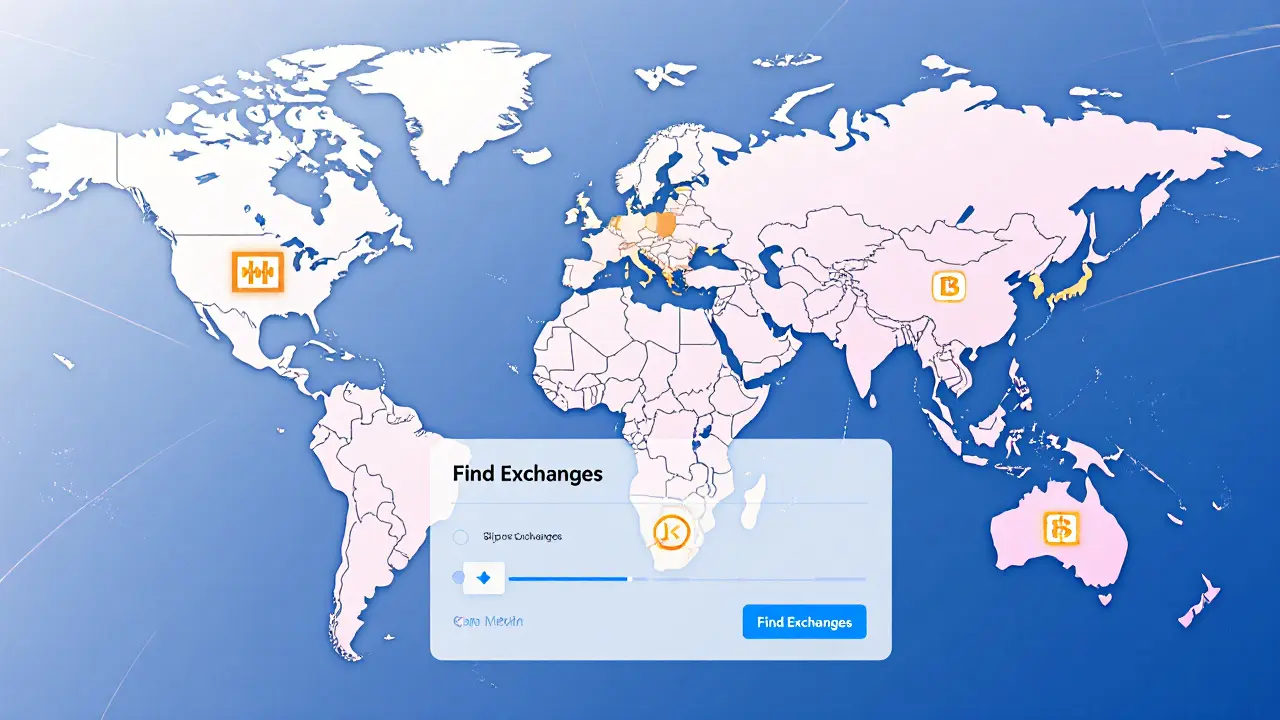Crypto Exchanges by Region – Guides, Rules & Reviews
When navigating crypto exchanges by region, a classification of cryptocurrency trading platforms grouped by the country or geographic area where they operate. Also known as regional crypto exchanges, it helps traders compare local rules, fees, and security standards. Understanding this grouping is essential because crypto licensing, the set of legal permits and registrations required for an exchange to offer services in a specific jurisdiction often dictates whether an exchange can legally accept US dollars, euros, or other fiat currencies. At the same time, a regulatory sandbox, a controlled environment where fintech firms test new products under relaxed supervision can fast‑track innovation, influencing how quickly an exchange meets compliance standards. Finally, exchange security, the combination of technical safeguards, audit practices, and insurance that protects user funds varies widely across borders, shaping trader confidence.
Why regional differences matter
Each region imposes its own regulatory framework, and that framework directly impacts the services an exchange can provide. For example, the United States requires a Money Services Business (MSB) registration, a BitLicense for New York, and often state‑level money‑transmitter permits. In contrast, countries like Thailand introduced a clear licensing path that demands a minimum capital reserve and a local partnership, while Iran presently bans several major exchanges due to sanctions and local crypto policies. These regulatory nuances create a semantic triple: crypto exchanges by region encompass regulatory differences, and regulatory sandbox influences licensing speed. Traders who ignore these details may face frozen accounts or unexpected fees.
Fees, liquidity, and supported assets also shift with geography. European exchanges typically charge lower maker fees thanks to MiCA’s passport system, which lets a licensed provider operate across 27 member states without renegotiating rates. Meanwhile, Asian platforms often offer higher leverage but impose stricter KYC due to local AML mandates. This relationship forms another triple: exchange security depends on regional laws, and regional bans affect market access. Knowing which jurisdictions enforce strict capital requirements versus those that prioritize speed can help you pick an exchange that matches your trading style.
Beyond compliance, regional factors shape the user experience. Exchanges based in the US may provide robust insurance funds and custodial services, while those in the Caribbean might focus on rapid onboarding and low‑cost withdrawals. In emerging markets, a regulatory sandbox can give startups the chance to launch innovative DeFi bridges, but they still need to secure a crypto licensing certificate to earn trust. This dynamic illustrates the triple: regulatory sandbox enables innovation, crypto licensing builds credibility, and exchange security reassures users. By mapping these entities, you get a clearer picture of what to expect from each platform.
So whether you’re hunting the cheapest fee structure, checking if an exchange is allowed in your country, or confirming that it meets security standards, the regional lens is the key to making an informed choice. Below you’ll find a curated collection of articles that break down licensing guides, regional bans, sandbox programs, and practical reviews of specific platforms—all aimed at giving you the actionable insight you need to trade confidently across borders.

Global Crypto Exchange Availability by Region - 2025 Overview
Nov 24, 2024, Posted by Ronan Caverly
Explore how regional regulations, market demand, and tech affect crypto exchange availability worldwide in 2025, with a focus on top platforms and future trends.
MORESEARCH HERE
Categories
TAGS
- decentralized exchange
- crypto exchange review
- cryptocurrency
- crypto coin
- CoinMarketCap airdrop
- smart contracts
- tokenomics
- cryptocurrency exchange safety
- crypto exchange
- cryptocurrency airdrop
- crypto airdrop
- cryptocurrency exchange
- crypto airdrop guide
- blockchain token distribution
- DeFi
- crypto exchange scam
- crypto airdrop 2025
- Ethereum
- cross-chain interoperability
- ERC-20
